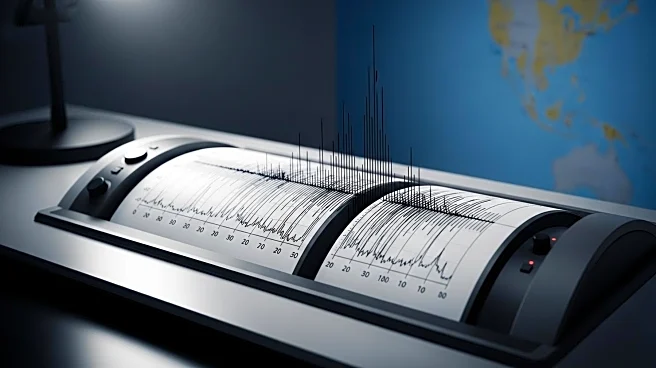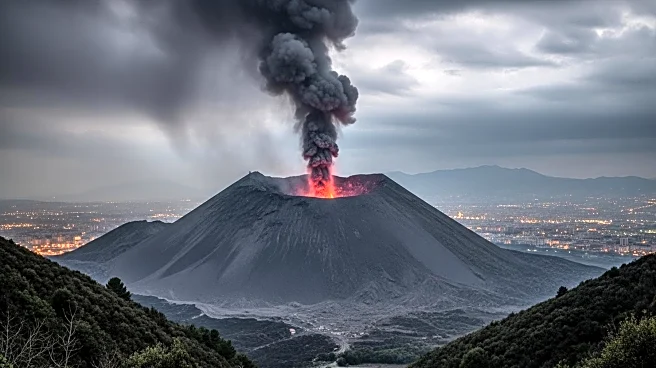What is the story about?
What's Happening?
A 7.4 magnitude earthquake struck off the southern Philippines, prompting initial tsunami warnings that were later lifted. The U.S. Geological Survey reported the earthquake occurred about 20 miles off the east coast of Mindanao at a depth of 36 miles. Coastal communities were advised to evacuate due to potential 'life-threatening' tsunami waves. Videos from the Philippines showed people reacting to the tremors, with children in schools taking cover and residents evacuating buildings. Despite some structural damage reported by provincial officials, no injuries were recorded, and the anticipated tsunami waves did not materialize. The Pacific Tsunami Warning Center confirmed the threat had passed, although aftershocks were expected.
Why It's Important?
The earthquake highlights the vulnerability of the Philippines, situated on the Pacific 'Ring of Fire,' to seismic activity. The initial tsunami warnings underscore the potential for significant impact on coastal communities, which could face devastating consequences if such waves were to occur. The event serves as a reminder of the importance of preparedness and effective communication in disaster management. The absence of injuries and the lifting of the tsunami warning are positive outcomes, but the incident stresses the need for ongoing vigilance and infrastructure resilience in earthquake-prone regions.
What's Next?
Authorities in the Philippines will likely continue monitoring for aftershocks and assess any structural damage to ensure public safety. The event may prompt reviews of emergency response protocols and infrastructure resilience in affected areas. Coastal communities might see increased efforts in disaster preparedness and education to mitigate future risks. The international community may also offer support or expertise in earthquake response and recovery efforts.
Beyond the Headlines
The earthquake's occurrence in a region frequently affected by seismic activity raises questions about long-term strategies for disaster risk reduction. It may lead to discussions on improving building codes and investing in technology for early warning systems. The psychological impact on residents, who live with the constant threat of natural disasters, is another dimension that could be explored, emphasizing the need for mental health support in disaster-prone areas.
AI Generated Content
Do you find this article useful?















